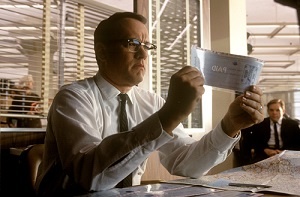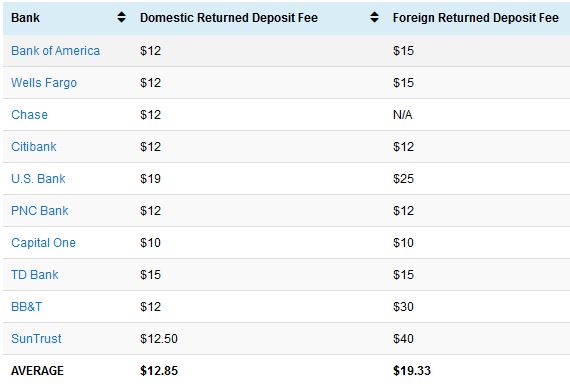 If you’re reading this, you know just how important it is to accept many types of payment because you never want to say “no” to a customer. This is exponentially important for purchases greater than $100 because checks are used for 1 out of 5 of those transactions.
If you’re reading this, you know just how important it is to accept many types of payment because you never want to say “no” to a customer. This is exponentially important for purchases greater than $100 because checks are used for 1 out of 5 of those transactions.
If the 2002 film Catch Me If You Can taught us anything, it was that businesses can never be naive or too careful when accepting checks. With dollar bills you can use a counterfeit pen or hold it up to the light and see if the appropriate watermarks, security threads, and color-shifting ink are present.
Checks are tougher to verify with the eye test. Unlike cash, there is no consistency with check printing. Even when ordering from their bank, consumers can create custom checks using a variety of methods, including templates from their financial institution, uploading family photos, and even printing checks at home on verified check paper.
Thus, you can’t simply hold a check up to the light so some magical indicator will tell you, “this is a real check, you may accept.”
As a business owner, you want to be 100% certain a check is real and it won’t bounce before depositing. You don’t want to be penalized with a deposit item returned fee, commonly known as return check fee. As of September 2014, the average deposit item returned fee at the 10 largest banks in America was $12.85 per check.

So, how can you verify a check is good? Let us help you.
Questions to Ask
First, of course, you want to match the dollar amounts written on the legal line as well as the box. To help verify if a check is good or not, some questions to ask yourself are:
- Is there a bank logo or address in the bottom left corner?
- Is there a security padlock immediately following the legal line?
If the bank’s phone number is printed, it’s not recommended you call it because you may end up talking to a fake “banker.” Should you choose to call, research the bank yourself and call the number listed on the website. And be aware that due to privacy laws, financial institutions are not required to disclose much information to you anyway.
Another thing to consider: You can always request check-paying customers draw funds on a local bank, that way you can personally visit the bank to confirm your customer’s and checks’ validity. This is not practical, though. You shouldn’t be expected to visit a bank each time your customers pay by check. It’s a real time drain (driving to and from the bank, waiting in line, etc.) and a waste of gas, too. Plus, you may not want to alienate potential customers who live out of town.
Take auto dealers for example…Is it feasible for them to request all car buyers live in the same town as their dealership? Many times, car buyers travel out of town for the best price available or because a dealership has the exact make/model/color he or she is looking to buy. If that were the case, auto dealers would significantly limit their customer base for customers wishing to pay by check.
MICR Line Requirements
Second, every real check has a MICR line (Magnetic Ink Character Recognition) that contains the bank routing number, checking account number, and check number. Not only that but the MICR line should not stick out like a shiny new penny. It should be just the opposite – dull, printed flat on the check without raised ink.
If the MICR line is present and matches all of the requirements, does that mean you should feel confident accepting it? No, because MICR lines have very specific fonts that only certified check processing equipment can read. The two most recognized font types that meet international standards are E-13B and CMC-7.
For these reasons, altering the MICR line in any way contributes to 62% of all counterfeit checks. Pretty scary when you think about it because you don’t want your business contributing to this statistic!
Check Your Check Writer Database
Have you heard about the little black boxes you can purchase from your financial institution to scan a check and verify its legitimacy within seconds? Oh, you don’t have one? That’s because there is no black box.
Only financial institutions and select business types have approval to access any information about a check writer’s account. These databases house highly valuable information about millions of check writers, including: Is the check writer’s account open or closed? What is their check writing history? Have they ever bounced a check?
So how do you get your hands on check writer databases? Partnering with a check service company that has access to them is your only shot. Granted, you won’t get to peek inside the database yourself. Your check service company acts as your eyes and ears and does the heavy lifting to help you verify checks.
The “check” to the right here is obviously a fake for many reasons. How about a little tougher test? Do you think you have the chops to spot a real check from a fake? Try your hand at the Fake Check Challenge.
Make no mistake, bad checks burn a hole in your business’ profits. The previous sections are certainly a good start in verifying if a check is good or not.
But by far the best way to verify a check is to leave it to check service professionals that provide check verification services. Check service companies have access to the aforementioned check writer databases and specialized methods to “recommend” or “not recommend” every check that you run at your point of sale. Check verification services authorize checks in seconds via phone, check terminal, or Internet.
As a check processing business for nearly 32 years, we have seen many fake checks in our day. Through this analysis we have compiled very trustworthy resources that help us determine if a check is good or not. Read the free guide here to learn more about check verification.



